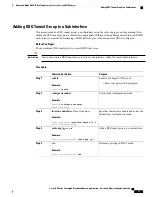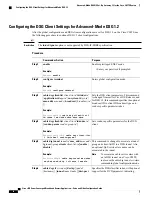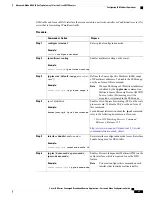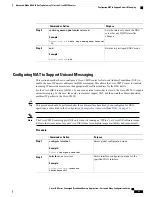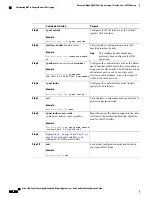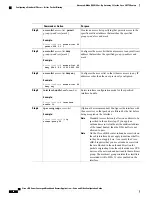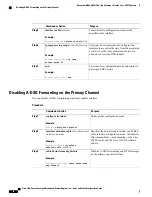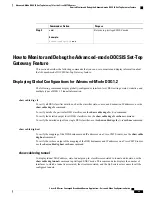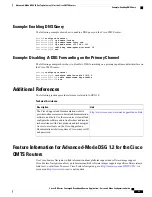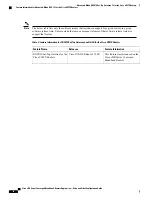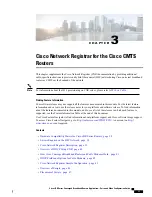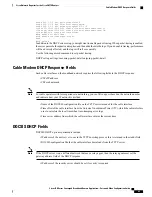
To display information for a given DSG tunnel, use the
show cable dsg tunnel tunnel-id
command, specifying
the tunnel for which to display information.
show cable dsg tunnel tunnel-id
[
cfr
|
clients
|
interfaces
|
statistics
|
verbose
]
•
cfr
—
Shows DSG tunnel classifiers.
•
clients
—
Shows DSG tunnel clients.
•
interfaces
—
Shows DSG tunnel interfaces.
•
statistics
—
Shows DSG tunnel statistics.
•
verbose
—
Shows DSG tunnel detail information.
show cable dsg tg
To display the configured parameters for all DSG tunnel groups, use
show cable dsg tg
command.
The
Chan state
column in the
show cable dsg tg
command output indicates that a channel belonging to
a tunnel group is either enabled or diabled. It is possible that a tunnel group is enabled but a particular
channel in that tunnel group is disabled.
Note
To display the configured parameters for the specified tunnel group, use
show cable dsg tg tg-id channel
channel-id
command.
To display detailed information for the specified tunnel group, use
show cable dsg tg tg-id channel channel-id
verbose
command.
show running-config interface
To display a tunnel group attached to a subinterface, use the
show running-config interface
command in
privileged EXEC mode, as shown in the example below:
Router#
show running-config interface bundle 11.2
!
interface Bundle11.2
ip address 4.4.2.1 255.255.255.0
no ip unreachables
ip pim sparse-mode
ip igmp static-group 230.1.1.30
no cable ip-multicast-echo
cable dsg tg 61
end
The IGMP static group IP address created automatically at the time of DSG configuration is not displayed
in the
show running-config interface
command output.
Note
show cable dsg static-group bundle
To verify all DSG static groups configured under a bundle interface, use the
show cable dsg static-group
bundle
command in privileged EXEC mode.
Cisco cBR Series Converged Broadband Routers Application
—
Voice and Video Configuration Guide
30
Advanced-Mode DOCSIS Set-Top Gateway 1.2 for the Cisco CMTS Routers
Displaying Global Configurations for Advanced-Mode DSG 1.2


